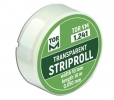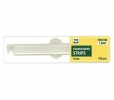Several factors can affect the predictability and longevity of posterior Class II restorations, particularly when direct composites are used. Among these factors are the historically technique-sensitive layering procedures required for the material’s proper placement, as well as less-than-ideal material characteristics, such as difficult handling, polymerization shrinkage, and low wear resistance. As a result, clinicians often face numerous challenges when providing these treatments to ensure proper adaptation of the material to cavity and preparation walls; shaping and sculpting the material; and, ultimately, the long-term function of the restorations for years to come.
Recently, bulk-fill composites have been introduced to help simplify the direct posterior composite restoration process by enabling placement of a single material increment of up to 4 mm. Even these materials, however, can demonstrate shortcomings in terms of ideal viscosity to thoroughly line and cover all aspects of a preparation floor and surrounding surfaces; adaptation characteristics, to ensure sculptability and ample working time, and wear resistance for use on occlusal surfaces. Fortunately, a new, injectable, high-strength ultra-fine particle composite (bulk fill composites) is now available, and it can be used in a one-step application for bulk-filling of large cavities of up to 4 mm without the need for capping or veneering using another composite.
Demonstrating ideal viscosity and thixotropic characteristics, bulk fill composites is highly shapeable and easy to manipulate, providing outstanding adaptation to the cavity to reduce the occurrence of porosities and air bubbles. The material’s low shrinkage stress and low volumetric shrinkage helps to ensure optimal marginal integrity and reduce the risk of secondary caries. Additionally, the homogeneously dispersed ultra-fine particles, which are fully covered by a silane coating, provide high flexural strength and wear resistance for a durable and long-lasting restoration that retains its gloss for years after placement.
In the case of a 35-year-old female who presented and required a Class II occlusal/lingual restoration.

bulk fill composites provided an easy, time-saving, single-material solution for treating the patient. Once etching and adhesive protocol were completed.


the material was easily injected into the preparation to cover all the grooves and crevices.

after which it was used to completely bulk fill the entire cavity, including the occlusal surface (ie, capping layer).

During sculpting and shaping, the material was extremely manageable, remained where it was placed, and did not stick to the instruments. Also noteworthy was the way bulk fill composites enabled a true shade match.

overcoming the shade problem of some bulk-fill materials due to the translucent nature of the material.






